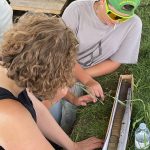
Soil sampling for Prairie farmers: How to test for nutrients and avoid common mistakes
Agronomy Management: Take representative soil samples, choose the right depths, analyze key nutrients

Soil organic matter and carbon sequestration
Changes in cropping practices over time have significantly improved soil quality

Selenium: Agricultural, environmental and human concerns
Agronomy Management: From a water quality standpoint, health of rivers and lakes should be of highest priority

Understanding phosphorus, part 3: Developing fertilizer recommendations
Agronomy Management: It’s important to have adequate P close to the seed during the first six weeks of growth

Understanding soil phosphorus, Part 2: Soil testing for plant-available P
Agronomy Management: The proper test for your soil and region can help answer questions your plants’ roots will ask this season

Understanding soil phosphorus, part 1
Agronomy Management: Rotations and fertilizer management have dramatic effects on pools of organic and inorganic P

One does not simply measure soil health
Agronomy Management: Just analyzing soil samples won’t give you the big picture

Selenium sits on thinnest line between health and hazard
Agronomy Management: Removing selenium from water is costly and difficult at best

Drought preparedness through soil and crop management
After each dry year, adapt your drought plan based on your experiences and what you learned

Managing irrigation with limited water
Some irrigation districts are advising users to brace for limits on available water


